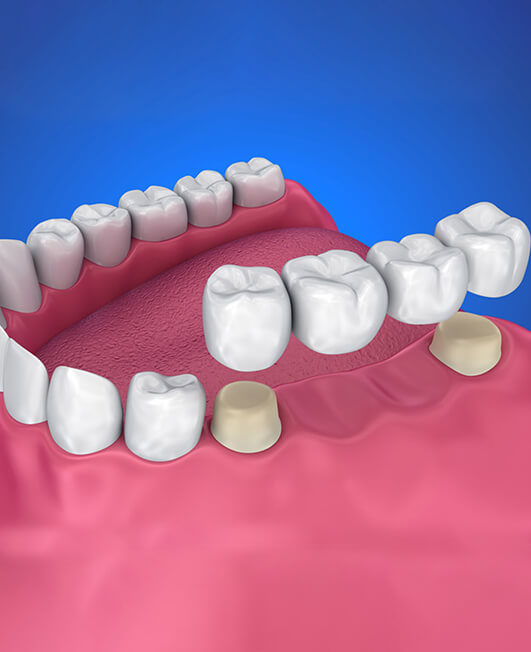Fixed dental bridges involve the preparation and crowning of teeth on either side of an area missing teeth to support artificial teeth to span the edentulous area.
A fixed bridge is a non-removable appliance fabricated to replace missing teeth, which closely resembles a patient’s natural dentition. Besides serving to restore the appearance and performance of a complete smile, a fixed bridge also prevents teeth that are adjacent to or opposite the edentulous area from shifting to protect the integrity of the occlusion. Fixed bridges are strong, durable and natural looking restorations, which once they are permanently cemented into place allow all manner of normal oral function.


Fixed bridges are typically fabricated over the course of multiple visits and involve the preparation of the adjacent supporting teeth, impression taking, the placement of a temporary bridge as well as the try-in and cementation of the permanent restoration. The teeth located on either side of the edentulous area that are crowned to provide support for the bridge are referred to as the “abutment teeth,” while the artificial tooth (or teeth) spanning across the empty space are known as “pontics.”
With the dental technology available today, bridges can also be completely supported by implants without any preparation or crowning of the adjacent natural teeth required. Depending upon the aesthetic and functional needs of a case, fixed bridges can be fabricated from different dental materials including porcelain, porcelain fused to metal, or engineered ceramic-like products such as zirconia.




